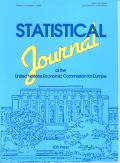Authors: Polfeldt, Thomas
Article Type:
Research Article
Abstract:
The concern about changes in environmental conditions has increased rapidly in the last decades. At the UN conference on the human environment in Stockholm in June, 1972, the problems were expressed and steps towards solutions were initiated. The Declaration and the Recommendations of the conference point to four fairly wide areas of concern: (1) the control of natural resources, including land use and energy resources; (2) pollution and its health effects; (3) the state of the environment; (4) environmental protection. In Sweden, there are three main laws governing activities with an impact on the environment. These laws, as well
…as a great number of committee reports, the programmes of the political parties, the research in the area, all confirm that the items 1–4 are the main areas of concern. The most important uses of information in the four areas are tied to the management of natural resources and energy, the identification of harmful effects, particularly in humans, the prevention of harmful effects by control and protection measures, and the checks of law enforcements and effects. The main users are decision-makers in government and industry, political parties, the media, environmental protection groups, scientists, universities and schools. Important problems of statistical methodology encountered in environmental statistics still remain unsolved. This is true in particular for the fundamental issues of population, frame and suitable parameters in the case of e.g., air and water quality statistics. Some related problems concern the possibilities to use monitoring data for statistics. Time series are of great interest in environmental statistics, not least in view of our limited knowledge of many ecological interconnections. One reason is that time series, and trends, are often easier to interpret than the numbers indicating levels. The closely connected theory and techniques of spatial variation must also be expected to play an important role in environmental statistics. Another set of problems is connected with the geographical units used for presentation of the data. A number of such areas, which are not now used in statistics, seem to be desirable for various parameters. A search for some compact form of environmental information is natural in view of the wealth of environmental variables and data. It gives rise to the compilation of both indices and indicators. Mathematical models are an important tool for, e.g., meteorologists and hydrologists, and some statistics are based on such models. The problems of assessing the accuracy or, more generally, the quality of the data must be tackled in co-operation with the data supplying agencies.
Show more
DOI: 10.3233/SJU-1983-1402
Citation: Statistical Journal of the United Nations Economic Commission for Europe,
vol. 1, no. 4, pp. 407-417, 1983
Price: EUR 27.50





